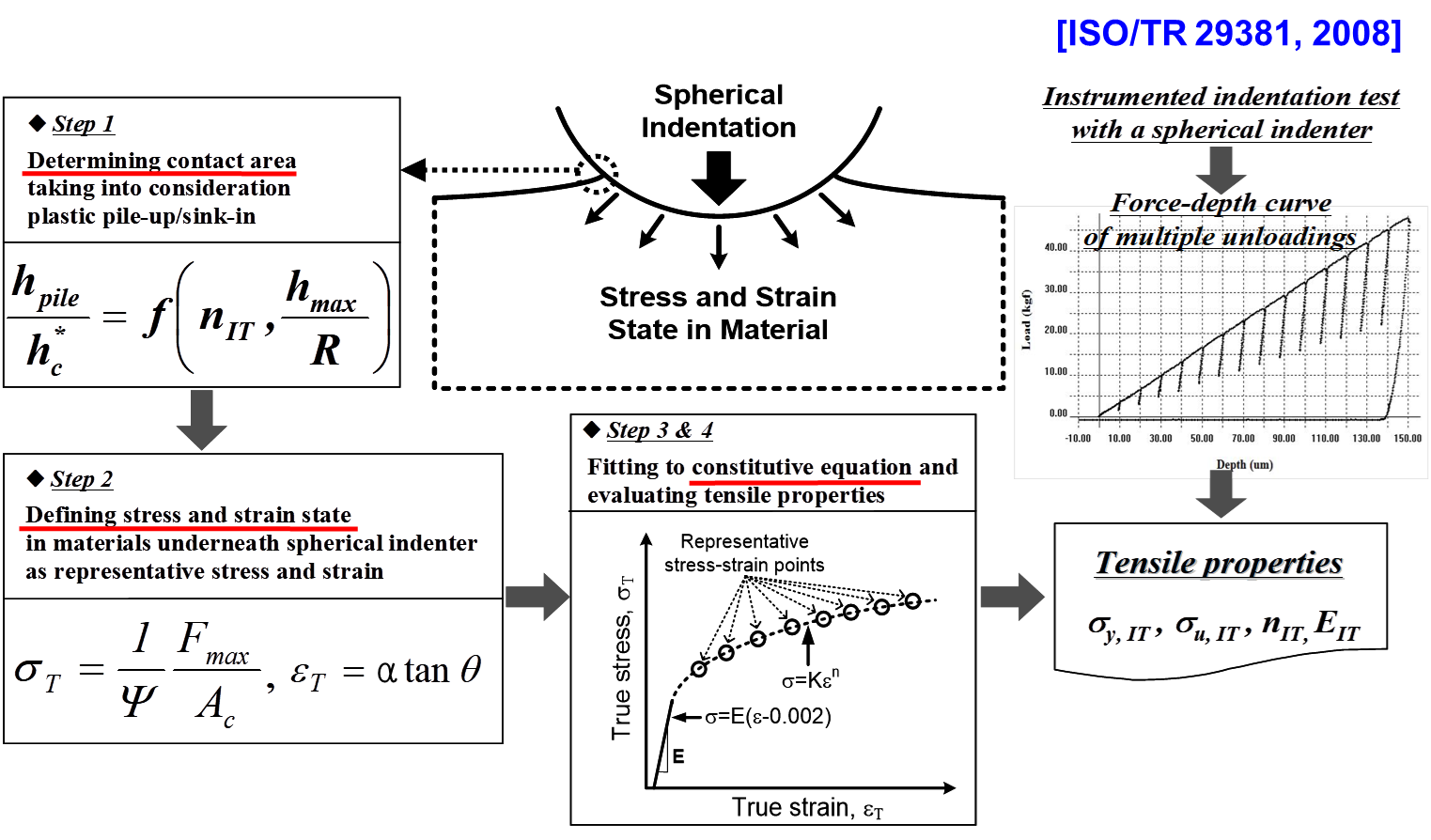Products
- Product
- Attachment
- Testing service
- FAQ
Support
- Frontics News
- Frontics Video
-
Products
-
Support
Products
Support
Products
Support
Frontics' AIS test equipment can evaluate the following five items.

■ Basic principle: Repressentative method
The relation of the hardness of metals to a uniaxial tensile (or compressive) stress has been extensively studied. In general, the amount of deformation or strain around the indentation varies from point to point. We may, however, expect that when full plasticity is reached, there will be an average or ‘representative’ value in the deformed zone. Empirical and analytical results show that on the specimen surface and at the edge of a spherical indentation the flow stress is highest and its magnitude is related to the mean contact pressure (pm). Also, these results showed that strain produced at the deformed zone depends only on a/R, where a is the contact radius and R is the spherical indenter radius.
Based on the above results, the following relations were determined for the representative method:
σr=pm/ψ, εr = f(a/R)
Here σr, εr are the ‘representative’ stress and strain induced by indentation, and ψ is a plastic constraint factor which is obtained from the analysis of stress field underneath the spherical indenter. Thus, by measuring the contact pressure (pm) at each indentation depth, we can create the pm – a/R curve (The contact radius (a) can be determined from contact depth (hc),  .) With the representative method, the pm – a/R curve can be converted to a σr – εr curve. This algorithm was introduced in ISO in 2008 as Technical Report 29381.
.) With the representative method, the pm – a/R curve can be converted to a σr – εr curve. This algorithm was introduced in ISO in 2008 as Technical Report 29381.

Figure. 2 Principle of evaluation of tensile properties using IIT (Ref. ISO/TR 29381, 2008)









